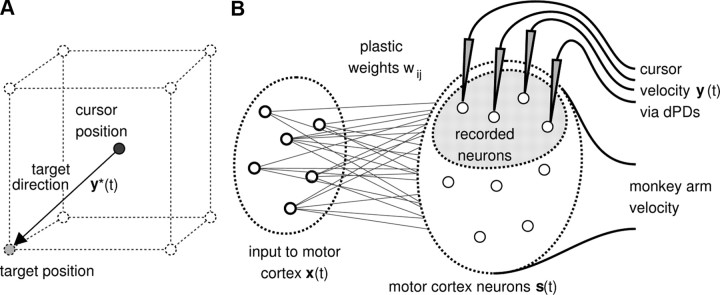Figure 1.
Description of the 3D cursor control task and network model for cursor control. A, The task was to move the cursor from the center of an imaginary cube to one of its eight corners. The target direction y*(t) was given by the direction of the straight line from the current cursor position to the target position. B, Schematic of the network model used for the cursor control task. A set of m neurons project to ntotal noisy neurons in motor cortex. The monkey arm movement was modeled by a fixed linear mapping from the activities of the modeled motor cortex neurons to the 3D velocity vector of the monkey arm. A subset of n neurons in the simulated motor cortex was recorded for cursor control. The velocity of the cursor movement at time t was given by the population vector, which is the vector sum of decoding PDs of recorded neurons weighted by their normalized activities.

